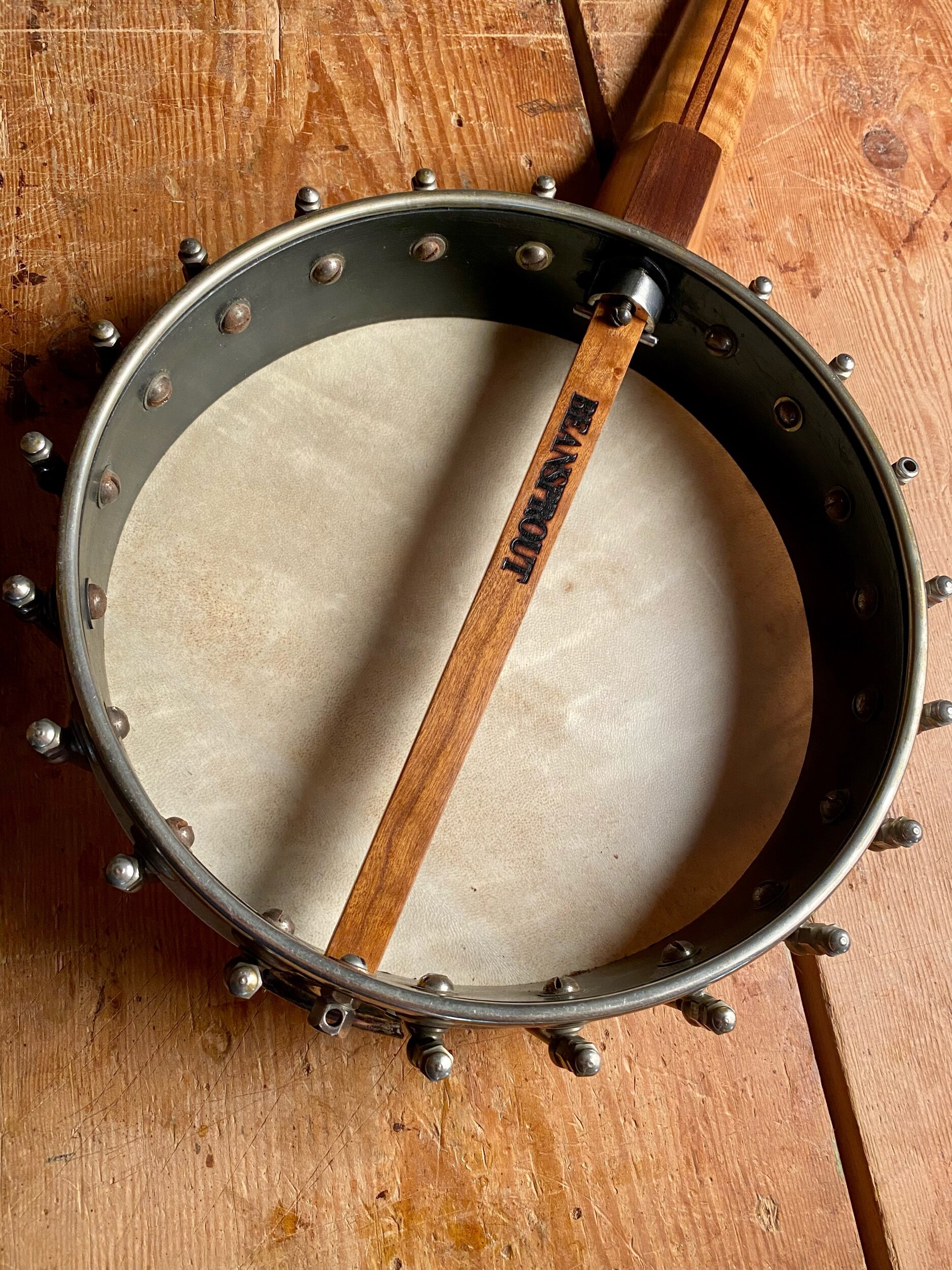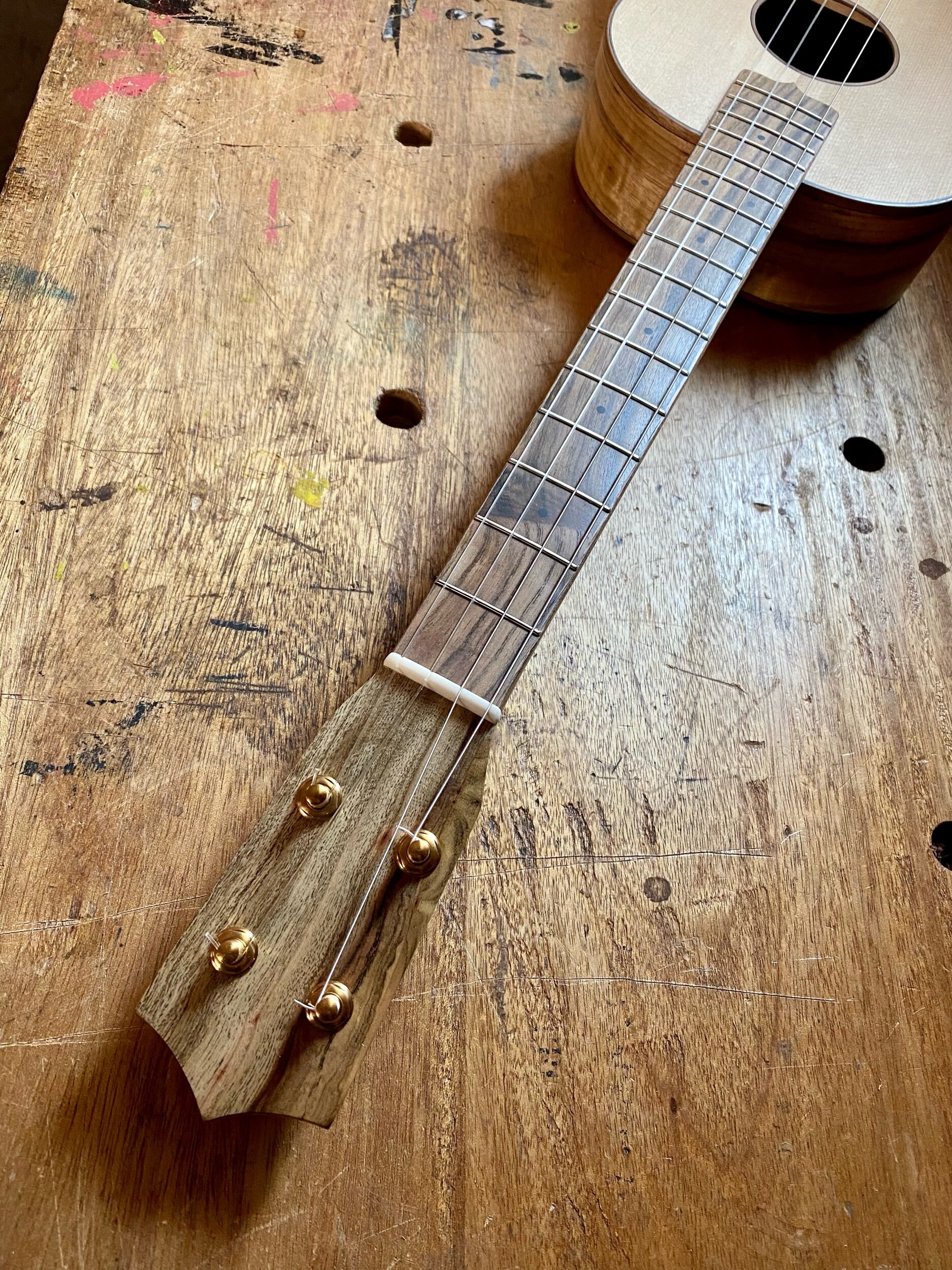This is a second alto ukulele for Jann, who asked for one with a low fourth string and good playability all the way up the neck. She has been tackling some challenging classical music lately and needs the extra range. I had fun with contrasts on this one, with the light spruce, dark walnut and greenish pistachio all wrapped up in maple binding. It’s loud but rich and sings all the way up the neck, I hope it works for her.
The spruce top is from Camp Westwind on the Oregon coast, the curly walnut was a gift from guitar maker Ben Bonham, the fir neck is salvaged from a floor board and the Pistachio is from California orchards.


































































































































